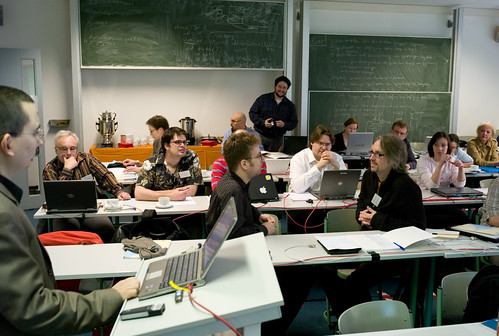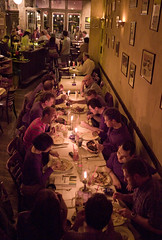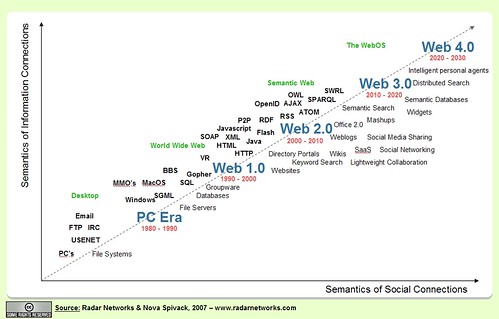4th Semantic Desktop Workshop in Berlin wrapup
Last weekend we had the fourth Semantic Desktop Hands-On Workshop, this time again in Berlin. There were about 25 participants from the whole world, people from various open source Semantic Web projects, employees of companies, interested friends, professional consultants, and semantic web evangelists. All were practioners, all anticipate using the semantic web.

Nothing could possibly go wrong, and it turned out to be a great success. We had three days of intensive discussions, code hacking, demos, talks, talks, talks, and a special social event on each day. At the end, everybody was just exhausted and we had a wrapup session in the Bebop-Bar, discussing about the future of the Semantic Web until 03:00.
Here is a small video I hacked together using photos from our semantic desktop hack flickr pool.
And here more pictures from this pool:



Nothing could possibly go wrong, and it turned out to be a great success. We had three days of intensive discussions, code hacking, demos, talks, talks, talks, and a special social event on each day. At the end, everybody was just exhausted and we had a wrapup session in the Bebop-Bar, discussing about the future of the Semantic Web until 03:00.
Here is a small video I hacked together using photos from our semantic desktop hack flickr pool.
And here more pictures from this pool:


|
leobard - 16. Apr, 19:01
|
|
Richard Cyganiak (guest) - 16. Apr, 21:06
Hey Leo, thanks for making the video, that's what it was like!
jccq - 17. Apr, 12:23
Ubercool! :o)
The vidio is soo damn cool!
Thanks leo!
It really make sense to have such meetings when people, like us, spend the year being very careful at everybody's work and releases and so they immediately can start discussions at the highest level and in the informal setting of one such workshop.
Very useful to somehow "see further"
Giovanni
Thanks leo!
It really make sense to have such meetings when people, like us, spend the year being very careful at everybody's work and releases and so they immediately can start discussions at the highest level and in the informal setting of one such workshop.
Very useful to somehow "see further"
Giovanni
W.O. Fleischer (guest) - 18. Apr, 10:25
Thanks ...
Dear Leo, dear Hanne - many thanks for inspiring and organizing this wonderful Semantic Hack 2007 in Berlin. For me, it is absolutely amazing to be a witness how semantic workers are laying the ground for a world better understandable and communicable. What really gives me a thrill, is the open possibility for everyone to get personally involved in this promising global experiment.
Arne Handt (guest) - 18. Apr, 21:47
Hanne?
Who's Hanne?
W.O. Fleischer (guest) - 18. Apr, 22:26
Genau!
Sorry, Hanne ist natürlich ein Mashup von Arne und Handt!
leobard - 16. May, 08:51
Hanne,
you should have known :-)))))
thx to Wolfgang Fleischer and Giovanni Tummarello for the feedback! I think we did exactly the right thing with this workshop.
thx to Wolfgang Fleischer and Giovanni Tummarello for the feedback! I think we did exactly the right thing with this workshop.
- add comment - 0 trackbacks








